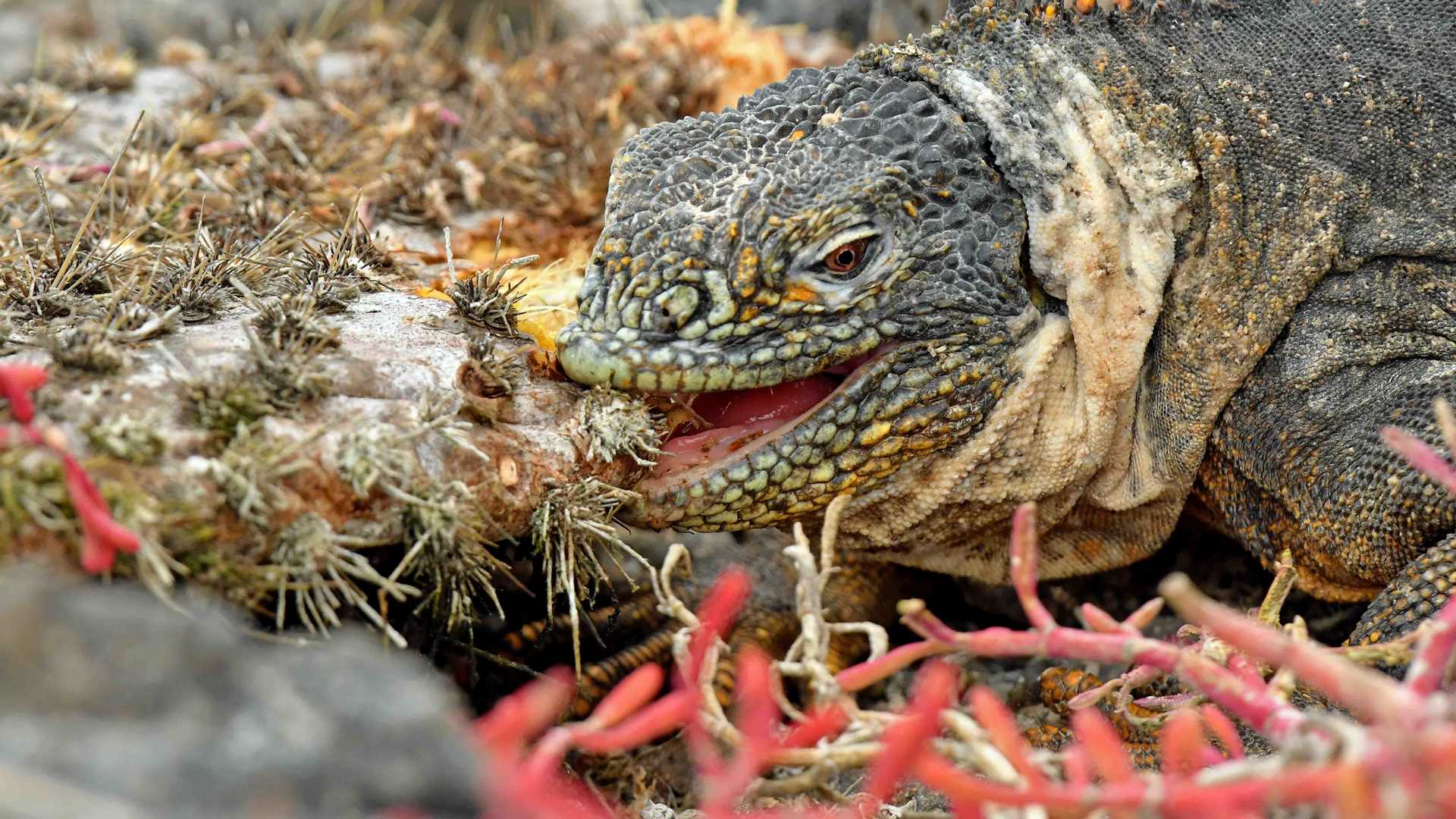The garua season in Galapagos makes the islands chilly and overcast early in the morning, but then the sun shines and the day becomes warm and nice. This drizzle is what wets the plants and keeps them surviving, and birds such as finches drink the vital liquid to survive. This morning we visited Plazas, an uplifted area where many land iguanas settled down, and at the same time marine iguanas coexist with lava lizards and red crabs along the coast. A big colony of sea lions live there, and from the moment you disembark you find many babies and juveniles playing in the water. Further up along the cliff the trail shows us many kinds of sea birds enjoying the benefit of the strong wind to do their tasks—some are frigates that chase red-billed tropic birds to steal their food. They follow until they catch them by the tail and force them to regurgitate their food.
Swallow-tailed gulls are pretty—we found many nesting by the cliff. The scenery here is beautiful, full of pelicans, petrels, shearwaters, and boobies flying through the air. After a great morning of exploring this tiny island, we came back to our ship to jump into the water and cool off from our hot hike.
In the afternoon, we navigated for a few hours to reach Santa Fe Island. It is one of the oldest islands in Galapagos and has a very calm bay that is home for sharks, sea lions, turtles, and white-spotted eagle rays. There we kayaked with some our intrepid guests, while others went to walk uphill in search of the famous Santa Fe land iguanas. They are a unique type of reptile and part of the mystery of the arrivals and establishment of animals that came to colonize the archipelago millions of years ago. This island also is famous for the giant prickly pear opuntia cacti, which are enormous and serve as food for iguanas that live here. Along the beach were many sea lions resting after a tiring fishing journey.
Lucky us! We found four juvenile Galapagos hawks resting on saltbushes. The sunset was warm and spectacular, a great ending for a wonderful day, experiencing this unique environment and learning more about nature and how these complex ecosystems work.







